Why Ignoring Vacuum Issues Can Cost You More Than You Think
This blog post aims to highlight real facility challenges, answer common search queries, and empower your team to address vacuum issues before they escalate.
1. Inconsistent performance across floor types
2. Musty, sour, or mouldy smells from the vacuum
3. Power loss, tripped breakers, or short-circuiting
4. Power-cord is hot or physically damaged
5. Allergy flare-up after cleaning
6. Harder to push or control
1. Inconsistent performance across floor types
Search terms: "Vacuum not working on hard floors, "Vacuum sucks on carpet only"
If your vacuum works well on carpet but struggles on hard surfaces like tile or vinyl, it may indicate worn components, poor seal contact, or incorrect height settings. This imbalance can lead to incomplete cleaning, especially in mixed-floor environments, and may signal that your requirement needs servicing or adjustment.
What causes it:
Auto-adjustment heads not adapting correctly to surface changes
Damaged brush rolls or worn out squeegee blades
Loss of nozzle seal pressure on smooth floors
Why it matters in commercial settings:
Leave debris behind
Cause operators to overwork areas
Potentially damage certain floors due to brush roll wear or vibration
This leads to in-efficient labour, re-cleaning, or worse - non- compliance with cleanliness standards, especially in food pre zones or medical facilities.
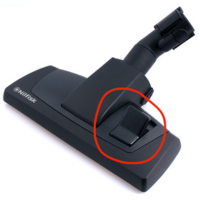
2. Musty, sour, or mouldy smells from the vacuum
Search terms: "Vacuum not working on hard floors, "Vacuum sucks on carpet only"
While a burning smell is hard to miss, a musty, sour, or damp odour - similar to mould or wet fabric - is often overlooked. However, this type of smell is a clear hygiene warning, particularly in humid or moisture-prone environments.
What's likely happening:
Filters have absorbed moisture and now harbour bacteria
Organic waste in the dust bag/bin is decomposing
Vacuum was used on wet floors or carpets not fully dry
Filters have absorbed moisture and now harbour bacteria
Organic waste in the dust bag/bin is decomposing
Vacuum was used on wet floors or carpets not fully dry
Why it's dangerous:
A musty-smelling vacuum is potentially spreading bacteria and allergens back into the air-counteracting your cleaning efforts. In schools, aged care, and clinics this can tigger asthma, allergic reactions, or even infection spread.
What's likely happening:
Immediately replace all filters and thoroughly clean dust containers
Immediately replace all filters and thoroughly clean dust containers
Never vacuum wet surfaces with a dry-use-only vacuum
Sanitise internal compartments monthly with a disinfectant safe for electronics
Never vacuum wet surfaces with a dry-use-only vacuum
Sanitise internal compartments monthly with a disinfectant safe for electronics
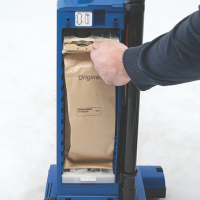
3. Power loss, tripped breakers, or short-circuiting
Search terms: "Vacuum keeps shutting off", "Vacuum trips power", "Vacuum won't stay on"
If your commercial vacuum frequently shuts off, loses power, or trips circuit breakers, it's more than just old age - it likely signals an electrical fault. Ignoring these issues can cause serious safety hazards, equipment damage, and cleaning disruptions. Stop use immediately and seek professional inspection.
Underlying Issues:
Internal electrical faults
Faulty capacitors or power regulators
Overloading power boards or incompatible extension cords
Internal electrical faults
Faulty capacitors or power regulators
Overloading power boards or incompatible extension cords
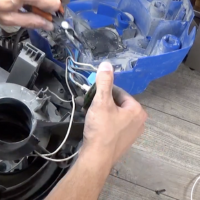
Facility impact:
In environments that rely on strict time windows for cleaning (e.g. event venues, medical rooms between appointments), electrical failure can derail schedules and create hazards.
Worse, unaddressed faults can result in motor burnout or even electrical fires, putting both staff and property at risk.
Professional tip:
Use grounded, commercial rated extension cords
Use grounded, commercial rated extension cords
Never run a vacuum with signs of power surging or shutdown
Schedule an electrical inspection immediately if issues reoccur
Never run a vacuum with signs of power surging or shutdown
Schedule an electrical inspection immediately if issues reoccur
4. The power cord is hot or physically damaged
Search terms: "Vacuum not working on hard floors, "Vacuum sucks on carpet only"
If your vacuum power cord feels warm or shows signs of damage like fraying, cracks or loose prongs, stop using it immediately. Continuing to use a damaged cord risks electrical shock, fire, and further equipment damage. Inspect cords regularly and replace if needed for safety.
Why this happens: Overuse and bending stress wires over time
Cords are wrapped too tightly around the unit during storage.
Exposure to heat, sunlight, or cleaning chemicals weakens insulation
Overuse and bending stress wires over time
Cords are wrapped too tightly around the unit during storage.
Exposure to heat, sunlight, or cleaning chemicals weakens insulation
The risk you're running:
A warm or worn cord can result in:
Electrical shocks
Intermittent outages
Short-circuiting or equipment failure
Electrical shocks
Intermittent outages
Short-circuiting or equipment failure
This is particularly dangerous in wet environments or near flammable cleaning products.
This is particularly dangerous in wet environments or near flammable cleaning products.
What you should do:
Replace power cords showing any visible wear
Use proper cord management practices (no tight wraps)
Store vacuums in dry, temperature-controlled areas when not in use
Replace power cords showing any visible wear
Use proper cord management practices (no tight wraps)
Store vacuums in dry, temperature-controlled areas when not in use
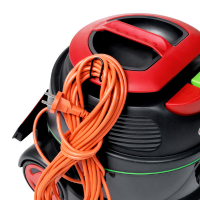
5. Allergy flare-ups after cleaning
Search terms: "Vacuum causing allergies", "sneezing after vacuuming", "dust still in air after vacuum"
Are your staff or occupants sneezing or coughing after cleaning? This may mean our vacuum isn't capturing allergens properly and is releasing dust back into the air.
Root Causes:
Worn-out or clogged HEPA filters
Poor seal between dust bag and housing
Cracks in casing or improper filter installation
Worn-out or clogged HEPA filters
Poor seal between dust bag and housing
Cracks in casing or improper filter installation
Why it's serious:
This is especially critical in:
Childcare centres and schools
Healthcare settings
Hospitality and aged care
Childcare centres and schools
Healthcare settings
Hospitality and aged care
Here, airborne allergens and fine dust can cause real health risks - even open you to legal or compliance consequences.
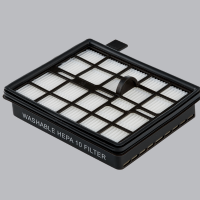
6. Your vacuum is getting harder to push or control
Search terms: "Vacuum hard to move", "wheels dragging on vacuum", vacuum feels heavy"
If cleaning staff find the vacuum heavier, dragging, or jerking during use, it's more than a nuisance. These signs often indicate mechanical problems like worn wheels or damaged brushes. Addressing them promptly helps maintain cleaning efficiency and prevents further damage.
Likely causes:
Worn or damaged wheels/casters
Misaligned or jammed brush rolls
Bent vacuum head frame or warped base plate
Worn or damaged wheels/casters
Misaligned or jammed brush rolls
Bent vacuum head frame or warped base plate
Why it matters:
Staff fatigue and potential injury
Reduced productivity and cleaning time
Floor surface damage from uneven drag or scraping
Staff fatigue and potential injury
Reduced productivity and cleaning time
Floor surface damage from uneven drag or scraping
Quick maintenance tips
Inspect wheels monthly and replace cracked or seized rollers
Realign brush heads after heavy-duty use or storage
Don't ignore user feedback - it's often the first sign of wear
Inspect wheels monthly and replace cracked or seized rollers
Realign brush heads after heavy-duty use or storage
Don't ignore user feedback - it's often the first sign of wear
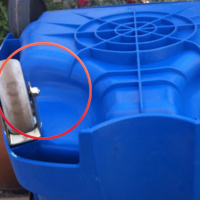
Maintenance schedule for commercial vacuums
Stay ahead of breakdowns with this practical maintenance routine for facility teams.
Daily:
Empty dust bags/bins
Check for clogs
Wipe extractor
Empty dust bags/bins
Check for clogs
Wipe extractor
Weekly:
Clean or replace filters
Inspect brushes and belts
Test cord
Clear motor vents
Clean or replace filters
Inspect brushes and belts
Test cord
Clear motor vents
After heavy-use:
Perform suction test
Check wheels and cord
Sanitise vacuum
Perform suction test
Check wheels and cord
Sanitise vacuum
Monthly:
Inspect housing and seals
Test electrical components
Check brush roll
Inspect housing and seals
Test electrical components
Check brush roll
Every 6-12 weeks
Schedule professional servicing
Inspect motor performance
Replace worn internal parts
Schedule professional servicing
Inspect motor performance
Replace worn internal parts
Smart equipment choices prevent 90% of these problems
Investing in durable, maintenance-friendly vacuums helps prevent most of these issues from happening in the first place. At capital equipment Hire, we recommend trusted models like:
Nilfisk VP300 Vacuum:
Lightweight & compact
Certified H13 HEPA filteration
Great for offices, clinics, and low-noise areas
Lightweight & compact
Certified H13 HEPA filteration
Great for offices, clinics, and low-noise areas
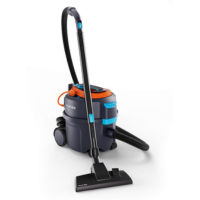
Nilfisk VP600 Vacuum:
Modular build with interchangeable parts
Low energy use
Ideal for large multi-site cleaning operations
Modular build with interchangeable parts
Low energy use
Ideal for large multi-site cleaning operations
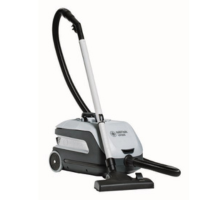
Nilfisk VU500 Upright:
Fast, powerful carpet cleaning
Easy to maintain
Built for event venues, hotels and conference centres
Fast, powerful carpet cleaning
Easy to maintain
Built for event venues, hotels and conference centres
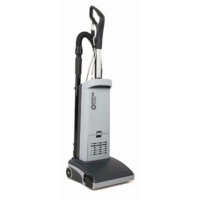
Explore the full range of industrial and commercial vacuums at Capital Equipment Hire.
Final thoughts: Small signs lead to big problems - unless you act early
Commercial vacuums are the backbone of your cleaning operations, and ignoring warning signs - especially the lesser-known ones - can lead to:
Costly repairs
Staff downtime
Safety and hygiene risks
Lost productivity and client trust
Costly repairs
Staff downtime
Safety and hygiene risks
Lost productivity and client trust